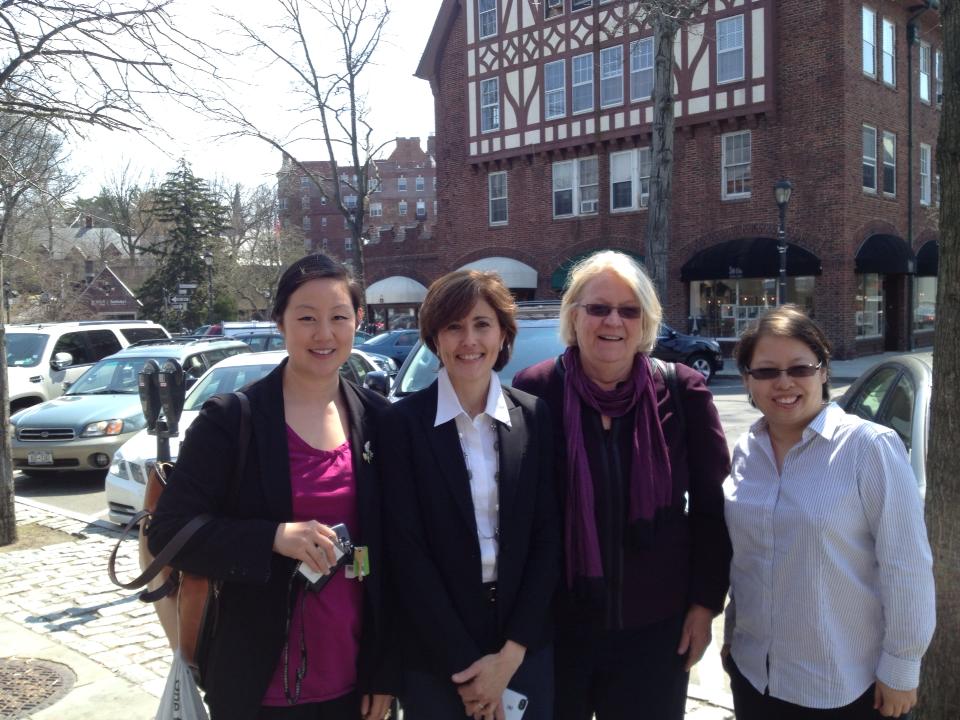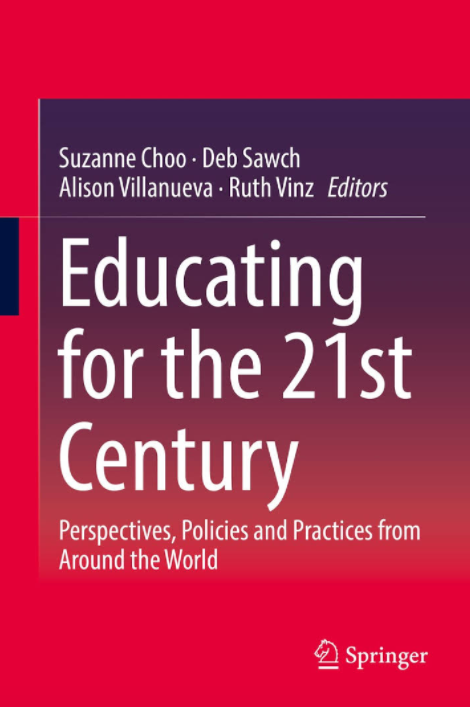Beyond Finnish Lessons: Perspectives from schools around the world, distilled in a book by three TC graduates and their mentor

Those are just some of the issues addressed in Educating for the 21st Century: Perspectives, Polices and Practices from Around the World (Springer), a new volume of papers edited by three former TC doctoral students – Suzanne Choo (Ph.D. ’12), Deb Sawch (Ed.D. ’13) and Alison Villanueva (Ph.D. ’13) – and their mentor, Ruth Vinz, Enid and Lester Morse Professor in Teacher Education and Professor of English Education.
“It’s up to institutions like TC to cultivate developing teachers’ ability to engage students in multiple perspectives and to encourage them to imagine ‘the other.’ If we’re not addressing this, we’ve failed as educators.”
While at TC, Choo, Sawch and Villanueva, guided by Vinz, launched an initiative called Studies in Educational Innovation, dedicated to exploring factors that contribute to educational excellence in schools around the world. From 2012 through 2016, they co-organized three Global Learning Alliance (GLA) Conferences (at TC and in Singapore), with the next meeting scheduled for 2018 in Finland, convening educators, scholars and innovators from more than 40 nations to discuss strategies for promoting critical thinking, creativity, ethical development, global knowledge and citizenship, digital and multimodal literacies and much more.
Educating for the 21st Century represents some of the fruits of those efforts.
“The number one talent employers look for is collaborative problem solving, and the ability to work with unlike others, so it’s up to institutions like TC to cultivate developing teachers’ ability to engage students in multiple perspectives and to encourage them to imagine ‘the other,’” said Sawch recently. “If we’re not addressing this, we’ve failed as educators. Our book provides both macro/global and country-specific perspectives on education as well more granular/classroom based approaches to what it means to educate in our complex, technological, interconnected world.”
For example, in “A New Wave of Learning in Finland: Get Started with Innovation!”, Tiina Korhonen, the head of a unique effort called Innokas Network, and Jari Lavonen, a teacher educator at the University of Helsinki, describe how the Network, through which teachers share new ways to support teaching and learning of a nationally agreed upon set of 21st-century competencies, has grown from a local effort to become a major force in 300 Finnish cities. Though Innokas began as a development group for technology-based innovation, it empowers teachers to become innovators by “choosing the tools they need to support their and their students’ innovations.” Innokas also allies itself with “maker culture,” which, in addition to robotics, includes methods drawn from traditional Finnish crafts making. The ultimate heart of the effort is an emphasis on peer-led teaching, parent involvement and teacher ownership. There is now a Global Innokas Network, with participating schools in the United States, China, Canada and Australia.

The chapter highlights many specific innovations that have since been enacted – a ninth grade interdisciplinary global themes course; a tenth-grade unit on Dickens’ A Tale of Two Cities in which students work in “social activist-focused units” to understand “issues of the voiceless”; a math course in which eleventh-graders learn to use regression models by identifying and solving real-world problems; and above all, “the Lens,” a common language around 21st century capacities that the community adopted in trying to achieve its goals. More broadly, though, the authors discuss challenges of such a systemic change effort. The biggest pitfall: the danger of reducing that effort to “a product, not a process,” and of failing to create and accommodate to genuinely new practices.
Still it’s pretty clear that Choo (now Assistant Professor in the English Language and Literature Group at Singapore’s National Institute of Education ), Sawch (an independent educational consultant) and Villanueva (Director of Humanities at Ridgefield Public Schools in Ridgefield, Connecticut), view the Westland project as a model – both for other school districts and for graduate schools of education. “The Westland project can be looked at as a case study where practice, theory, and a strong vision perfectly converge to create conditions that promote transformational change and innovation in teaching and learning for all students within a global context,” Villanueva told an audience at a recent book talk.
“It speaks to the power of TC to help incubate big ideas so that they thrive,” Sawch says. “Under Ruth’s leadership, guidance and support, Suzanne, Alison and I were able to found the Global Learning Alliance and conduct 18 months of global research on high-performing schools. We continue to cultivate the GLA’s growth and staying power to this day in our collaborative efforts to deepen both scholarship and practice around what it means to prepare students for the challenging world that awaits them.”
— Joe Levine
Published Friday, Mar 10, 2017